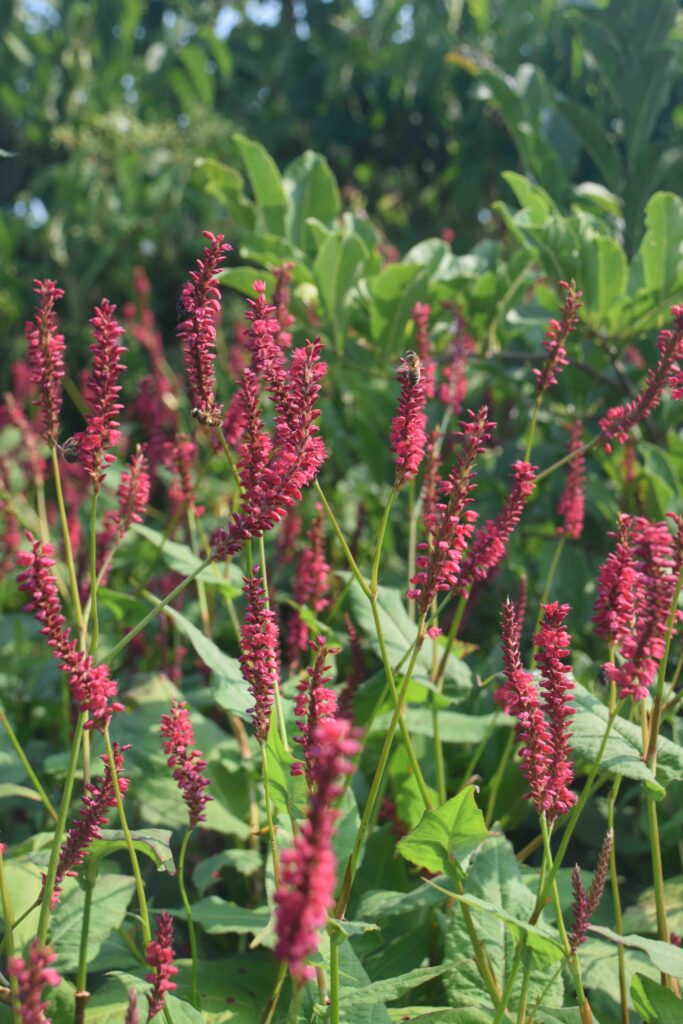
It would be very unfair to judge or condemn all members of a family just because of the bad behaviour of one member. But lots of gardeners dislike persicarias, often called polygonums or knotweeds.
I have a gardening friend who says they would never allow one into their garden!
Persicarias are despised, or treated with suspicion by many gardeners, mainly because of the dreaded Japanese knotweed. To be completely fair, there are some native knotweeds that are troublesome weeds too. But the group also includes some fantastic plants and it is one of these that I want to highlight this week. This is Persicaria amplexicaulis, one of the most valued plants in my garden. I appreciate them more each year.
Like most persicarias it has spires of tiny flowers. Each head of blooms remains attractive for weeks or months as the flowers open, one after the other. The arrow-head shaped leaves clasp the upright stems. Most varieties start to bloom in July and they continue until the first hard frost of autumn. Although the individual flowers are small, they create a mist of colour. Best of all, they form dense, weed-smothering clumps, do not wander or spread and they are free from pests and diseases. They have become an essential feature in fashionable ‘Prairie Gardens’ and, as a result, a lot of breeding has taken place and many new varieties have been introduced. I am a sucker for new plants and so I have quite a few. And I confess that a lot of them are variations on a very similar theme. Nearly all grow to about 1m high and there are few kinds with distinctive foliage. ‘Golden Arrow’ is different and good, with yellow leaves, and there is one with variegated leaves; ‘Eastfield’ but the subtly splattered leaves are not exactly delightful. I am glad to have it but it is not indispensable.
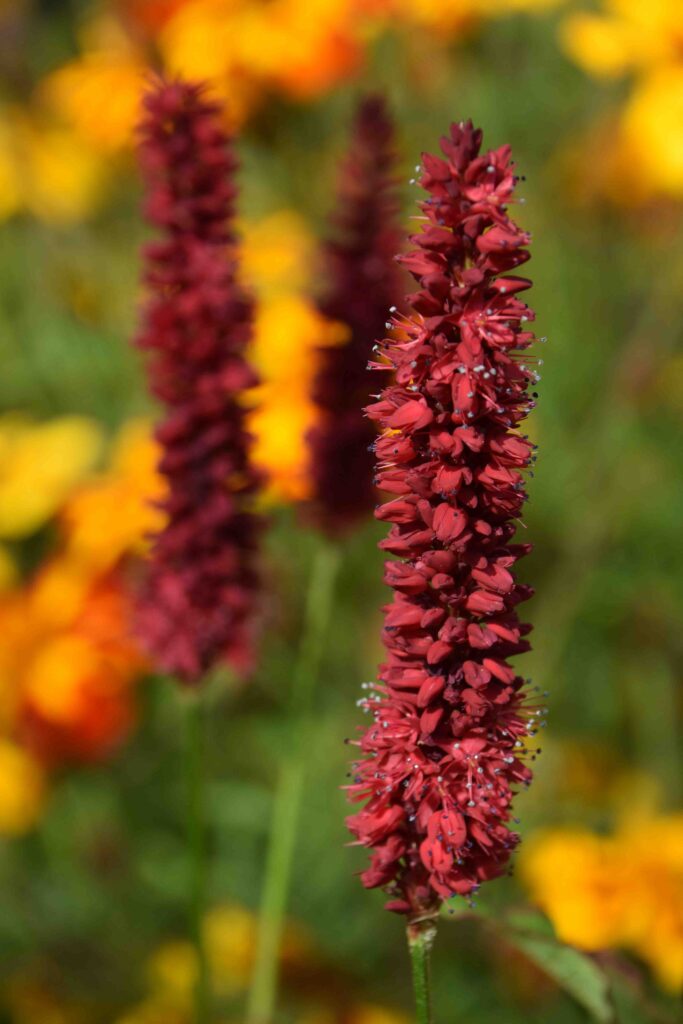
The flowers of most are shades of red, varying from pink to almost orange and some are white too.
The reason I value them so much is that they are so easy to please. They will grow in heavy clay and in soil that is wet at times. They prefer full sun and will bloom best in a bright spot though they will tolerate some shade. When grown in full sun they are self-supporting and do not need staking.
You can buy them now, in full bloom and add them to your border. The small blooms are loved by honeybees and also wasps. When frost kills the growth it collapses into sections and plants should be cut down and tidied. Established clumps can be divided in autumn or spring. They have thick, almost rhizome-like stems at ground level. They are more effective when grown in groups of three or more plants. They are robust and strong growers and may swamp small plants but they are perfect among shrubs and other strong perennials. They come into growth in spring but do not make much upward growth until late May so they will not swamp early flowers like peonies and they are great for covering the foliage of spring bulbs or among hellebores.
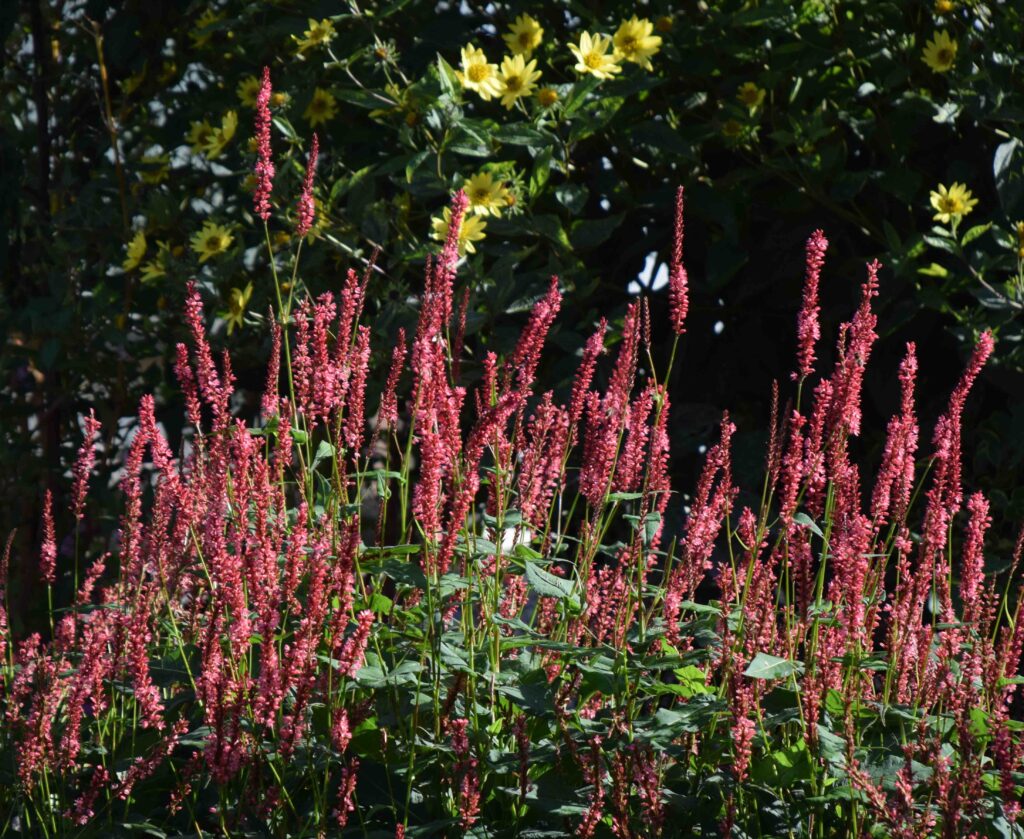
If I had to pick out a favourite of those I have in the garden I would say it was ‘Orangefield’ which is brighter than most and has an exceptionally long flowering period. I have no other plant in the garden that gives so much colour for so long for so little effort. And it never skips a beat once it starts to bloom and it has coped with the heat and drought of this summer after a waterlogged winter – I can’t say that about many other plants.
But they are all good and reliable. A useful feature of all is that they are clothed with healthy leaves right down to soil level so that, although they are quite tall, they can be used quite close to the border edge – they don’t have ugly ankles. For this reason they are also perfect companions for ornamental alliums, especially the tall ‘purple ball’ kinds. The persicaria foliage will not swamp the allium leaves but will grow up and cover it as the alliums bloom. And then the persicarias will bloom for the next four months.
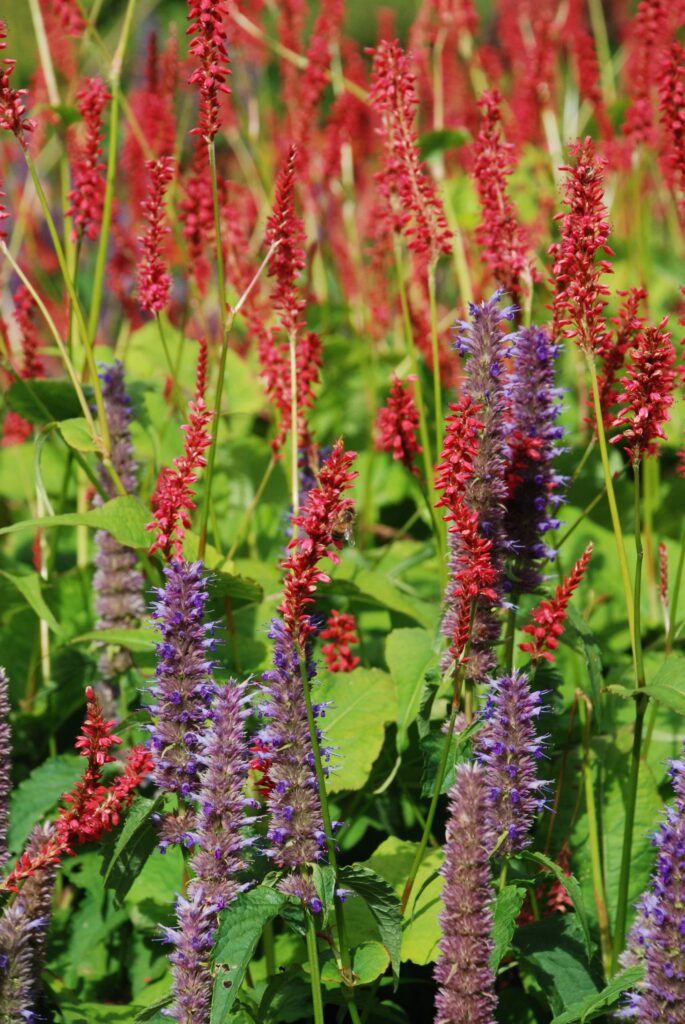
If all this sounds rather too good to be true, well, for once it really is true. Your less educated neighbours may question your plant choice but you will have the last laugh. If you want or need some reliable, easy, attractive and healthy plants to fill your borders with colour for summer and autumn you need these plants.
I said I would confine myself to just Persicaria amplexicaulis but I will mention two other persicarias, one because it is very popular and probably the most widely available type and the other because it is a useful plant.
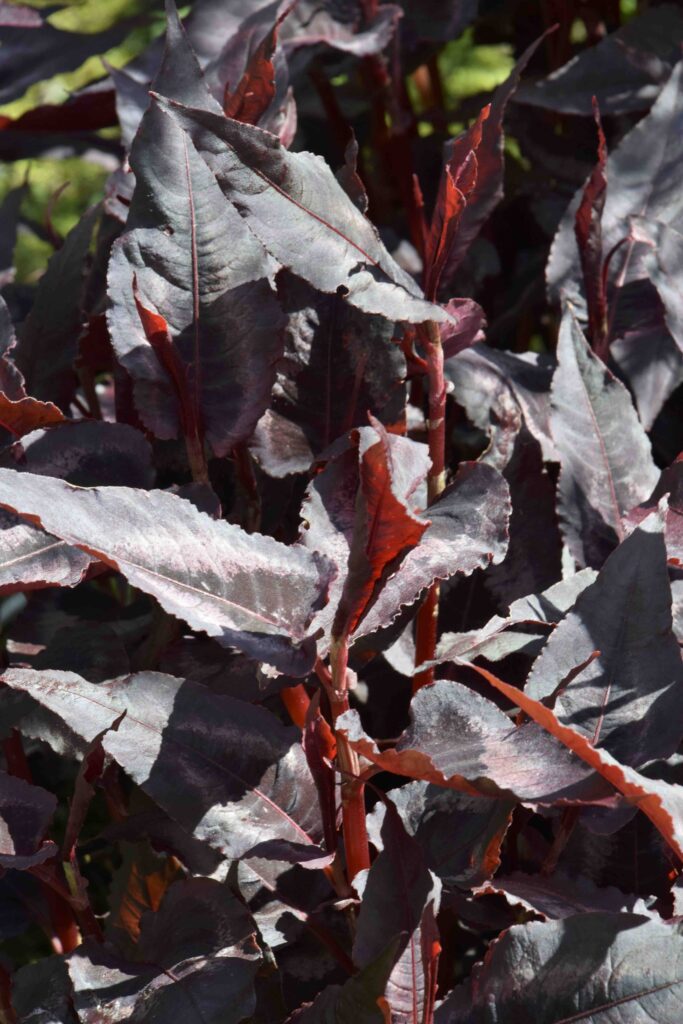
First, ‘Red Dragon’. This is another well-behaved plant that forms a neat clump, rarely spreading far. It has beetroot purple foliage and is a great contrast to other plants. It is self-supporting at first but usually flops as it grows, forming a large dome by autumn. It is brightest in full sun. In late summer it produces round heads of white flowers resembling popcorn. They are loved by hoverflies.
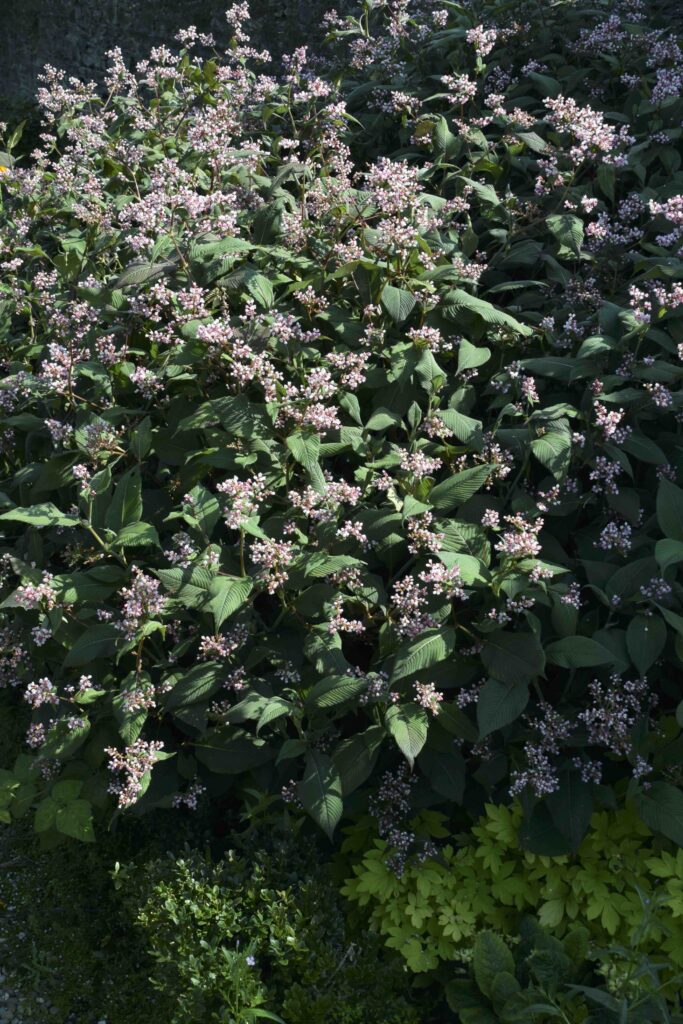
The other is Persicaria campanulata. This creeps over the soil and can form dense, weed-suppressing clumps of creeping stems. It will grow in shade and dry soil. The foliage is hairy and attractive but this one is a bit of a spreader so is best planted where it can run free – but it spreads on the surface and not underground and is easy to divide or dig up so do not be afraid. In summer it produces lots of small pink, bell-shaped flowers all over the plant. It is another useful plant but best among shrubs and at the edge of cultivated areas because it will swamp smaller plants.